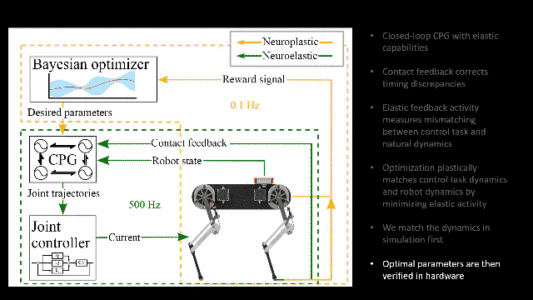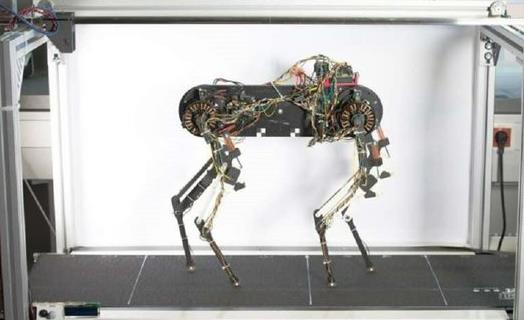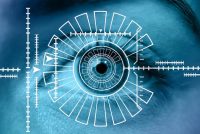According to foreign media Tech Xplore, the Max Planck Institute for Intelligent Systems (MPI-IS) in Stuttgart, Germany has invented a four-legged robot dog, Morti, which can adjust its walking posture after each fall and learn how to walk.
A paper elucidating the technique, “Learning Plastic Matching of Robot Dynamics in Closed-loop Central Pattern Generators,” was published July 18 in the journal Nature Machine Intelligence The first author of the paper is Felix Ruppert.
“The robot dog we studied, Morti, has the same reflexes as animals and can autonomously learn how to walk from failure,” Rupert said.
▲The robot dog Morti
1. Get up after a fall, Morti can imitate animals to learn
Both humans and animals have a network of neurons in the spinal cord called CPG (Central Pattern Generator). CPGs can help organisms perform rhythmic tasks such as walking, blinking, or digesting. This network of neurons does not require input from the brain to generate periodic muscle contractions.
Rupert installed a virtual spinal cord on Morti’s back to simulate the action of CPG, and installed a sample database in this virtual spinal cord. When Morti walks smoothly, sensor data on the robot’s feet is continuously compared with data in the CPG sample library to provide an appropriate walking posture.
If the robot falls, the learning algorithm optimizes the way it walks by changing the distance and speed at which the legs swing back and forth. In the process of machine learning, the CPG will send some adaptive motion signals to make the robot walk more smoothly. At the heart of this machine learning process is changing the CPG’s output signal and monitoring when the machine stumbles.

▲Morti optimizes walking based on feedback data
Morti imitates the process of small animals learning to walk. They only find the most effective way to use their muscles and learn to walk after falling over and over again. At first, Morti would fall, but after about an hour, the algorithm would help Morti find the best way to walk, Rupert said. Rupert also said: “My team is currently adding more sensors to the Morti to expand the Mortimer’s range of motion. We want to make the Morti more like an animal.”
2. High efficiency and energy saving, Morti’s energy consumption is reduced by 42% after walking for one hour
To walk the same distance, most of the current industrial quadruped robots need dozens or hundreds of watts of electricity, but Morti only consumes 5 watts of electricity.
On the one hand, the industrial quadruped robot has a larger volume and weight, and requires more electricity to support the action, on the other hand, because Morti’s algorithm is more intelligent.
When a normal robot walks, machine learning will pre-design the details of each leg movement through a lot of calculations, which consumes a lot of power. But after Morti fell while walking, he could readjust the angle of his walk based on the results of the new algorithm. Morti uses this feedback data to learn how to walk without the need for a lot of computation. Morti reduces energy expenditure while learning to walk. The study found that after Morti walked for an hour, it used 42% less energy than when it first started walking.

▲Morti walking on the treadmill
Dhireesha Kudithipudi, a professor at the University of Texas at San Antonio, said: “Generally speaking, AI can learn a specific task well, but AI can’t do it when the environment changes. Recalibration. While Morti can autonomously adjust its own movement patterns based on data feedback, it may be better at recalibrating the environment.”
Conclusion: Combining artificial intelligence and biology to explore more possibilities for robots
Rupert’s robot dog can learn autonomously like a living creature through artificial intelligence algorithms. This not only combines machine learning techniques, but also involves the biological field.
If this technology can be used at scale, there will be two benefits: First, machine learning will be more energy efficient and consume less energy. Machines no longer have to perform violent calculations based on large amounts of data, but can become more “smarter” through autonomous learning. Second, this technology can bring inspiration for the combination of artificial intelligence and biological fields.
Currently, this technology could make robot dogs more like animals. In the future, as this technology develops, robots may become more human-like.




GIPHY App Key not set. Please check settings